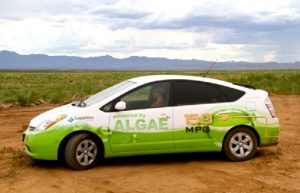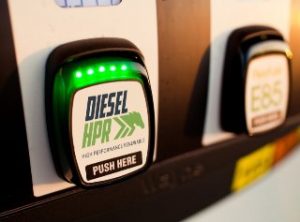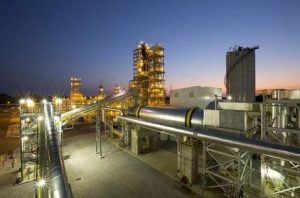 A few years ago, algae biofuels and oils looked like ideal options for the future of clean transportation. For those objecting to corn-based ethanol, or concerned about traditional biodiesel, algae fuel was showing a lot promise for passenger cars and commercial vehicles. Appealing factors have included emission reductions and the ability to tap into the renewable fuels and oils through plants.
A few years ago, algae biofuels and oils looked like ideal options for the future of clean transportation. For those objecting to corn-based ethanol, or concerned about traditional biodiesel, algae fuel was showing a lot promise for passenger cars and commercial vehicles. Appealing factors have included emission reductions and the ability to tap into the renewable fuels and oils through plants.
Algae are photosynthetic organisms related to plants that grow in water and produce energy from carbon dioxide and sunlight. For transportation fuels, they’re primarily used as biodiesel, but have other applications for cars, jets, and military vehicles. Algae can be grown rapidly and produce large amounts of fuel relative to the resources used to grow them – but it does need significant investment and supporters who will continue to back it over several years.
Lately, the future of algae biofuels has become open to debate and may stand a better chance of succeeding in other markets beyond automotive and transportation. However, algae fuel still has several deep-pocket investors and industry groups supporting it as a clean fuel option.
One of the surprises happened earlier this year with Solazyme renaming itself TerraVia, which will no longer focus on its fuels and industrial businesses. The new corporate identity means that it will supply its algae oil to the food and personal care industries for use in products like cooking oil, protein powders, and face lotion. Based in South San Francisco, Solazyme had been a staunch advocate of algae biodiesel for years. The company did split off a separate unit called Solazyme Industrials, offering its Soladiesel product, Solajet, and military-grade fuel; but the original company’s focus appears to be weighted on TerraVia.
Last year, Volkswagen of America had successful completion of its Renewable Diesel Evaluation Program in collaboration with Solazyme and Amyris, Inc., another algae fuel supplier. Beginning in 2012, Volkswagen measured the environmental impacts from the use of pre-commercial renewable diesel formulas in a 2012 Passat TDI, and found that it was producing significantly less in emissions than traditional diesel. VW displayed this car, fueled with Solzyme’s Soladiesel product, at ride and drive events around the country. VW still shows support for algae fuels as part of its clean fuels strategy in the post-diesel emissions fraud reporting scandal, along with its ambitious plug-in electric vehicle launch lineup.
Soladiesel was impressive enough to earn a fuel pump and marketing campaign with Propel Fuels. In California during 2013, Propel Fuels and Solazyme announced that sales grew by 35% at Propel stations, offering SoladieselBD in a B20 blend during a 30-day retail pilot program, compared to non-test sites.
Amyris, one of the two biofuels supporters of VW’s test project, applies its bioscience solutions to convert plant sugars into hydrocarbon molecules, specialty ingredients, and consumer products. On the transportation fuel side, the company is currently selling renewable diesel in metropolitan areas in Brazil and renewable jet fuel with its partner Total in markets around the world.
Another major biofuels company that still supports algae as a transportation fuel is Algenol Biotech. Last year, Algenol entered an agreement with Protec Fuel Management to market and distribute a new type of ethanol from Algenol’s Fort Myers, Fla., commercial demonstration module. The companies say it’s the first time that ethanol made from algae will be available commercially. Protec Fuel will distribute and market the fuel for E15 and E85 applications for both retail stations and general public consumption, as well as fleet applications. The partner companies will also offer Algenol’s future 18 million gallons per year from its commercial plant, which is planned for development in Central Florida this year and in 2017.
Algenol has been developing its Direct to Ethanol technology, which uses sunlight, algae, non-arable land and carbon dioxide to economically produce ethanol. Of particular interest to the company are those chemicals traditionally derived from petroleum-based propylene. As with ethanol, production of these chemicals using Algenol’s proprietary technologies could displace more expensive petroleum based chemicals in an environmentally friendly way, the company says.
Denso Corp., a major supplier of fuel injectors, air conditioners and electronics to Toyota and other OEMs, announced last fall that it’s getting into the algae biofuels space. The company was scheduled to open a cultivation and testing center in April 2016 in Japan that will have three oval ponds for growing algae. The company has been working on microalgae test projects since 2008, and sees the biofuel as an excellent option to reduce dependence on petroleum products and carbon emissions.
Algae biofuel falls under California’s Low Carbon Fuel Standard requirements, and had three backers on the list of supporters released last week – Algae Biomass Association, Advanced Biofuels Association, and Global Algae Innovations. Based in San Diego, Global Algae Innovations is considered to be a leading supplier of low-cost algae production technologies. These three entities were among 57 fuel producers and trade associations who wrote to California Senate President Pro Tem De León and Speaker Rendon, urging support for the California Low Carbon Fuel Standard.
On the federal front, algae is still receiving support. On July 14, the U.S. Department of Energy announced funding for up to $15 million for three projects aimed at reducing the production costs of algae-based biofuels and bioproducts through improvements in algal biomass yields. The goal of the funding is to advance the research and development of advanced biofuel technologies to speed the commercialization of renewable, domestically produced, and affordable fossil-fuel replacements.
Algae fuel has been included in the revised and finalized volumes for the federal Renewable Fuel Standard. One change made to the revised RFS was to clarify that only biofuels produced from oil from algae grown photosynthetically qualify for the RFS program under the algal oil pathways. Two companies have been approved by the U.S. Environmental Protection Agency as completing pathways assessments: previously mentioned Algenol Biofuels and Bedford-Mass.-based Joule Unlimited Technologies, Inc. The companies are being allowed to generate D5 advanced biofuels renewable identification numbers (RINs) for their algae-based ethanol under the RFS.
As far as the pro and con debate on the future of algae fuels, here are a few of the arguments:
- Microalgae is less land-intensive than corn production and less thirsty than corn ethanol; as revealed in a pro-corn ethanol study showing corn ethanol uses 2.8 gallons of water for every gallon of fuel refined, and is outclassed in efficiency by algae-based fuels. For example, Algenol converts saltwater into biofuel with yields nearly 17 times higher than those of corn, while producing 1.4 gallons of fresh water per every gallon of fuel produced.
- Dual-fuel vehicles and plug-in hybrids using algae fuel could be a good way to go for consumers and fleets. For example, what if you were to drive a bi-fuel CNG Chevrolet Impala that was also built on the Voltec plug-in hybrid drivetrain (if GM were to roll out that vehicle in the future)? That would offer the driver an opportunity to power the car on natural gas (which emits about 25% less greenhouse gas than a gasoline-engine vehicle), battery power (zero percent emissions). That might be ideal for fleets that worry about having drivers stuck out on roads. In the next few years, there will be a lot more clean fuels out there, including algae biofuel, along with cellulosic ethanol, dimethyl ether (DME), biogas (renewable natural gas), biodiesel, and renewable diesel.
- University of California San Diego professor Stephen Mayfield believes enough in the fuel to start up a company to bring it to market. The UCSD biology professor, who has spent the past 25 years experimenting with algae, now focuses on extracting crude oil from green algae to create biofuel. The research completed at Mayfield’s lab has helped his company, Sapphire Energy, convert algae into biofuel. Sapphire Energy is getting more attention in media and industry conferences as a leader in algae fuels. “Petroleum is from algae, so when we make gasoline from that and when we take oil from algae, it’s kind of the same,” Mayfield said. “We make what is called a fungible, or a drop-in fuel from algae.”
- In the past decade, vast amounts of money have been invested in the development of algae for biofuel production. Shell and ExxonMobil were investors, seeing algae biofuel as a pipeline for moving forward in a non-petroleum product. But these oil giants and several other major companies have been abandoning their investments lately. Algae biofuels producers, in many cases, haven’t provided good return on investment for corporate backers. Producers struggled to retain their high productivity at a larger scale and found predators often contaminated their farms. They also found that building the ponds in which to grow the algae and providing enough light and nutrients for them to grow proved too expensive.
- Another cause of the algae downturn has been plummeting oil prices.
- As mentioned about the Solazyme corporate identity changeover, algae can be used to make a diverse range of products. For example, algae can produce large amounts of omega-3 fatty acids, an important dietary supplement. This means it could be a sustainable, vegetarian source of omega-3, which is otherwise only available from fish. Algae is being used more as a sources of vitamins, minerals and proteins. Species found in algae, such as Chlorella and Spirulina, are commonly being consumed for their health benefits.
- In February, researchers at the National Renewable Energy Laboratory reported a breakthrough system that ramps up the efficiency of the algae-to-ethanol process to a significant degree. The new algae biofuel process builds on NREL’s previous work with two algae strains, Chlorella and Scenedesmus. The challenge has been getting it up to commercially competitive scale. The conventional approach leans heavily on increasing the lipids content of algae. NREL has been focusing on a whole-body system that extracts lipids, carbohydrates, and proteins for further processing into marketable products.



